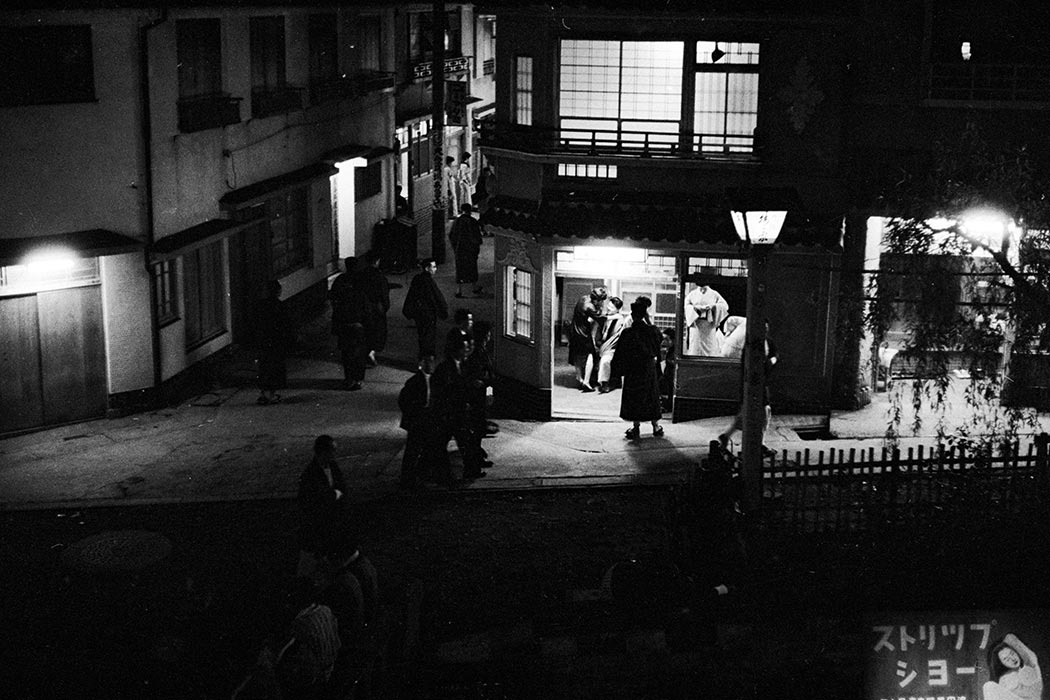In August, Amnesty International voted to support the decriminalization of prostitution. Many sex workers’ unions and advocacy groups say making their work legal would help them stay safer. It would mean they wouldn’t have to reach clients through sketchy underground channels and could get help from authorities without fearing arrest.
In a paper for U.S.-Japan Women’s Journal, G.G. Rowley described a similar fight that played out in Japan in the 1950s with sex workers unsuccessfully fighting to keep their jobs legal.
At the time, Rowley writes, about half a million women worked full- or part-time as prostitutes in Japan. One source put their typical earnings at 30,000 yen per month in take-home pay, at least three times as much as the salary of a typist, phone operator, or factory worker. The economics of sex work rested partly on patronage from U.S. servicemen who were part of the occupation after World War II and those who visited on rest-and-recreation leaves from the Korean War.
Rowley writes that, prior to the 1950s, the government licensed prostitutes and allowed them to operate in red light districts. But a movement to abolish prostitution, driven largely by middle-class Christians, had begun in the 1880s. After World War II, the occupying Allied command Health and Welfare Section also pushed for an end to legal sex work.
Like today, many opponents of legal prostitution expressed particular concern about human trafficking. Aside from protecting “the way of life of 40 million respectable married women,” as one put it, advocates for the new law argued they were saving women from being forced into sex work by their family members. At the same time, they also sought to make Japan more respectable in the eyes of other nations.
The sex workers themselves disagreed, forming a union and publishing a newspaper to express opposition to the abolitionist movement. Many of the women writing in the newspaper explained that they were helping younger siblings pay for junior high school or they were supporting their parents. They pushed back against legislators who saw their behavior as immoral, asking how they were expected to live if their source of income was taken away.
The Prostitution Prevention Act did finally pass in 1956. But Rowley notes that it did not eliminate prostitution. A survey in 1957 found that 80 percent of prostitutes planned to continue operating. By the time enforcement of the act began in 1958, more than 60 percent of former proprietors of brothels had officially changed their businesses to inns, bars, cafes, or other legal establishments, with sex work continuing more quietly inside. However, Rowley writes, the illegal nature of the industry led it to be taken over by organized crime, which continues to play a big role in Japan’s widespread, but technically illegal, sex trade today.






